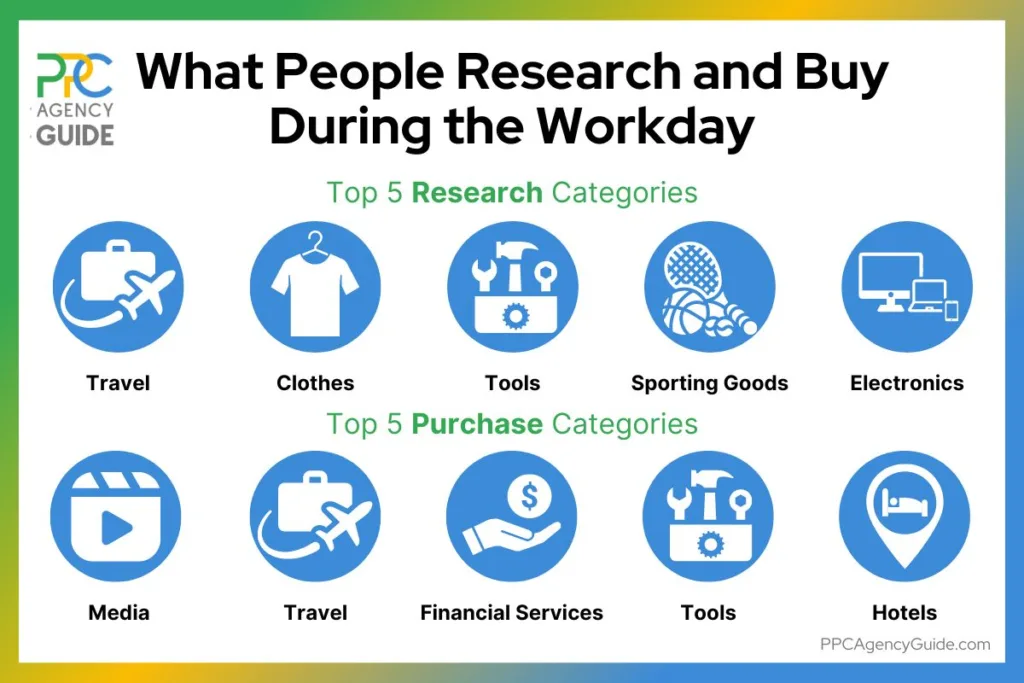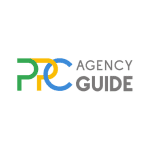
In the complex dance of digital marketing, two elements continually evolve and shape each other: consumer behavior and pay-per-click (PPC) strategies. One influences the other in a game of response and reaction. Noticing new trends in consumer behavior, brands adjust their PPC strategies, which, in turn, affects consumer experience and behavior. It’s a dynamic, ongoing evolution. On this page, we’ll delve into consumer behavior shifts that are pivotal in shaping today’s marketing landscape. Understanding these changes can help guide your PPC strategies for more effective results.
1. The Emergence of the Workday Persona
Well-defined personas are key to numerous aspects of PPC advertising, from targeting to copywriting. Conventional wisdom suggests that if you’re in a B2B market, your persona is active during the daytime on weekdays. Conversely, the best times to connect with a B2C persona are evenings or weekends. This concept has shaped the hours advertisers run ads, bidding strategies, device targeting, and more for years. The problem is that it’s no longer an accurate representation of how people behave, data from Microsoft reveals.
The lines between work and home now blur, and a new persona – the workday persona – has emerged. In all, 59 percent of people feel that their work and personal tasks are equally important during the workday, and 51 percent say they’re making more online purchases during work time than before the pandemic. Nearly two-thirds say they regularly research or purchase products and services during the workday, which makes it even more common than social media use.
Conventional wisdom also suggests that these people use their personal devices to shop and research. While a small portion, 56 percent, use their work systems. Perhaps most interestingly, workday shoppers aren’t simply putting together their grocery lists or ordering dinner either. They’re researching and purchasing high-value items during the workday.
Top Items Researched
- Travel
- Clothes
- Tools
- Sporting Goods
- Electronics
Top Items Purchased
- Media
- Travel
- Financial Services
- Tools
- Hotels

Adapting PPC Strategies for the Workday Persona
Not every brand is impacted in the same way. To bring consumer behavior and PPC strategies into alignment, brands should consider the following:
- Leverage analytics data to determine when and where customers perform their research.
- Evaluate search terms and paths to purchase to determine if and how consumers in a workday mindset behave differently.
- Run multi-platform PPC campaigns and make it easier for prospective customers to pick up where they left off, as most paths to purchase still include multiple touchpoints and channels.
- Experiment with voice search optimization for PPC to help your brand connect with people who are burned out from screens.
2. Personalization Expectations
Personalization is one area in which it’s easy to see how PPC strategies have shaped consumer behavior, thus resulting in additional shifts for advertisers. For instance, in the very early days of Google Ads, businesses had little more than keywords available while targeting. It wasn’t until nearly a decade later that advertisers using the Google Content Network, now known as the Google Display Network, gained the ability to target based on interests.
These and similar initiatives allow brands to reach their intended audiences much more effectively. Moreover, people don’t merely appreciate seeing content that feels like it’s made for them. Studies show that 71 percent of consumers expect personalized interactions, Adobe reports. More than three-quarters become frustrated when they don’t receive them.
Adapting PPC Strategies for Personalized Expectations
To improve personalization in PPC ads, brands may implement the following strategies:
- Segment audiences for tailored messaging in ads and landing pages.
- Leverage personalized product recommendations.
- Consider the consumer’s mindset when developing content.
- Leverage remarketing to enable consumers to continue their journey effortlessly.
- Work with AI in PPC advertising to help identify emerging trends and boost bids when consumers fit the demographics for high-conversion personas even before they show signs they’re ready to buy.
3. The Need for a Streamlined Customer Experience
Similar to personalization, marketers have developed countless ways to deliver quality experiences quickly. For instance, in a well-managed PPC campaign, the search term someone uses aligns with the keyword. This triggers a tailored PPC ad, taking the person to relevant content that allows them to complete their desired action. These matches could all be considered personalization, but they contribute to something greater: a streamlined customer experience. Simply put, the customer’s needs are anticipated, and they receive exactly what they need to complete their desired action quickly.

This, of course, boosts consumer engagement in PPC ads. However, now that this type of experience has become available, customers seek it out. For instance, 43 percent say they prefer to shop with brands that prioritize convenience, Deloitte research shows. Furthermore, four out of five people say elements such as speed and convenience are among the most important elements of a positive customer experience, pWc reports.
Adapting PPC Strategies for Streamlined Experiences
To create more positive, streamlined experiences, brands should consider the following:
- Ensure your PPC ad copy sets clear expectations for what the user will find when they click it.
- Meet expectations for personalization – don’t make your prospective customer hunt for information.
- Improve your ad quality score, including site speed and running mobile-centric PPC campaigns.
- Use analytics to identify typical user flows and explore options to reduce their clicks.
- Pay careful attention to keywords and intent when developing funnels.
- Eliminate clutter on landing pages so it’s easier for people to do what they came to do.
- Leverage tools like heat maps and events in Google Analytics to identify how people interact with your landing pages.
- Experiment with ways to allow the workday consumer to continue exploring your offering at a later time.
4. Increasing Concerns Over Privacy
Privacy is another area in which consumer behavior and PPC strategies are intertwined. Data has become essential to the modern marketer’s toolkit, allowing brands to provide users with better experiences and more relevant content. However, “big data” has raised customer concerns about how their data is collected and used.
More than 75 percent say they want greater company transparency about how their data is used, KPMG studies show. Additionally, 85 percent say it’s important to know a company’s data policies before making a purchase, according to McKinsey. Nearly half say they often or always consider switching brands when they discover data policies aren’t divulged or are unclear.
At the same time, customers are willing to share their data when it benefits them. For instance, 63 percent say they’re more open to sharing data for a product or service they truly value, pWc reports. Surveys from Microsoft echo the sentiment. Nearly nine in ten have refused to give information or have provided false information when a brand requested it. Yet, nearly half are willing to do so to gain free access to content, while more than half will do so for free access to a service or free samples of products and services. This means there’s a lot of middle ground between advertisers and customers.
Adapting PPC Strategies for Privacy Concerns
To address consumer privacy concerns, brands can leverage the following privacy-focused PPC strategies:
- Follow all laws and regulations.
- Create a clear data policy, stand by it, and make it readily accessible to consumers.
- Showcase why your brand is trustworthy throughout the customer journey.
- Balance data and personalization.
- Give consumers ways to opt out and alternatives to providing personal information.
- Deliver real value when collecting or leveraging data.
Get Help Adapting PPC for New Consumer Habits
Consumer behavior trends in digital marketing will continue to shift. Exploring evolving PPC tactics will allow you to capitalize on these trends, improve customer satisfaction, and boost the ROI of your advertising initiatives. However, this can be difficult to do if you aren’t wholly focused on paid advertising. Experienced PPC agencies monitor these changes and have access to a wealth of information across many brands, which shortens the learning curve and improves results. If you’d like to tap into this vast knowledge base and start leveraging the latest PPC strategies, request a complimentary consultation.


















